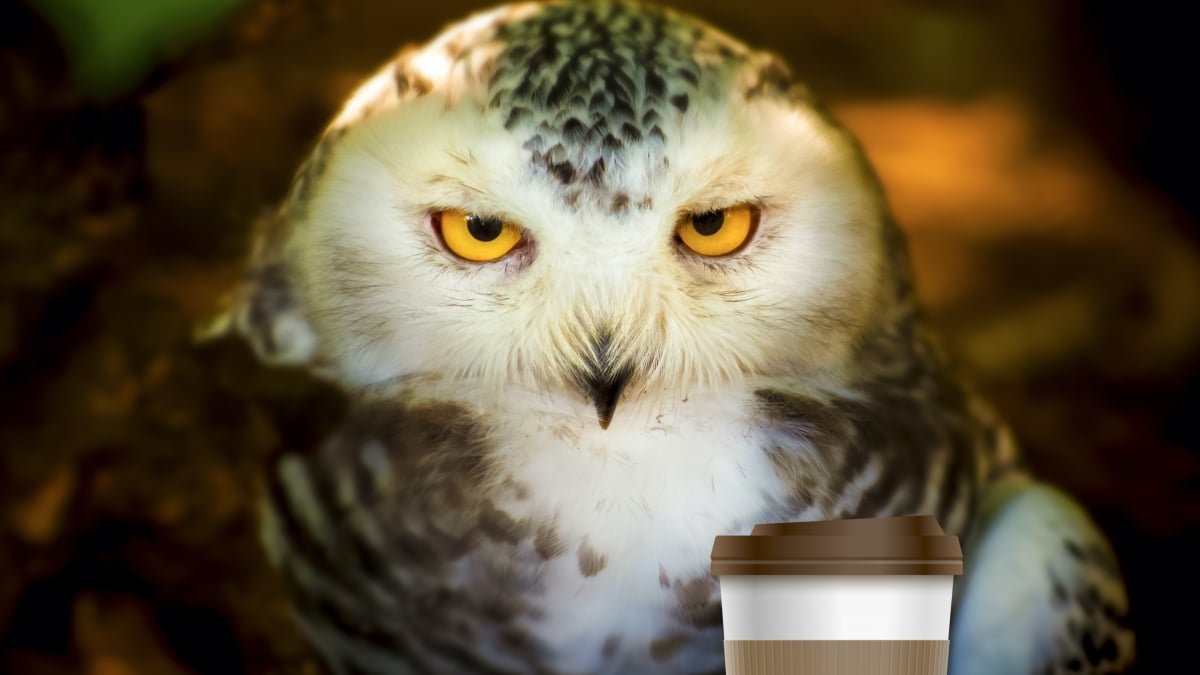When the light starts to fade in the evening is when I start feeling it. A rush of heightened awareness, a palpable sense of increased IQ, like my brain is a Sim City growing on fast forward. Daytime’s rural village of slow-talking neurons explodes into a bustling metropolis full of taxis, neon signs, and hot jazz. The sundown rush, I can confirm after years of experimentation, is unrelated to anything I might have imbibed, inhaled, or ingested. If anything, it feels like my morning coffee fully, finally, kicked in.
Science is just waking up to why this might be a feature of my brain I can’t and shouldn’t try to change, at least not until I reach old age. No matter how many times we set the alarm early, or read books with hopeful and masochistic titles like The 5 a.m. Miracle: Dominate Your Day Before Breakfast, around one in five of us will never not be cranky and hard to rev up in the mornings.
Now, in 2020, with the coronavirus pandemic upending work schedules and managers unsure how to respond (some more hands-off, some intensely micromanaging), the time is right for society to stop shaming this minority for operating when we are most productive. We can stop forcing people into cookie-cutter schedules that are literally, quantifiably killing them. Maybe, just maybe, we can come out of the closet as proud and fully-fledged creatures of the night.
The evidence is on our side, thanks to a growing mound of research into circadian rhythms and “chronotypes.” These internal clocks, written in our DNA (specifically this gene), enforced by brain chemicals like melatonin, have been shown by sleep studies and questionnaires to slot into one of four types. About half of the population just wakes and sleeps with the sun, no problem; another 20 percent are the “dominate before breakfast” extremists known as larks. Ten percent are light sleepers who ramp up in the late morning or early afternoon.
And then there’s the 20 percent segment I fall into, the evening brains. Some scientists call this chronotype “wolves”; the culture dubs us night owls. Call us what you want, just don’t call us early for breakfast.
It is us night owls who kept the rest of you safe for 99 percent of human evolution
Having a diverse mix of chronotypes makes evolutionary sense. Back in 1966, a pioneer in sleep research and mental disorders named Fredrick Snyder proposed something called “sentinel theory: “any animal that lives in groups should have at least some of that group who are happy to stand guard in the dark while the majority sleep.
Sentinel theory wasn’t confirmed in humans until 2017, when researchers stuck Fitbit-like sleep trackers on members of a hunter-gatherer tribe in Tanzania, some of the best representatives of humanity’s natural state. Over the entire 20 nights of the study, published by the Royal Society, guess how long the entire tribe was asleep at the same time? Just 18 minutes.
Chronotypes in modern populations “represent a legacy of natural selection acting in the past to reduce the dangers of sleep,” the authors conclude. Translation: It is us night owls who kept the rest of you safe for 99 percent of human evolution, spotting the sabertooth tigers long before they ripped the tribe apart. You’re welcome.
Mashable Trend Report
The coup of the larks
Then came the Industrial Revolution — or as we should perhaps start calling it, the coup of the larks. Productivity in factories was tied to daylight, so lark industrialists thrived and dictated terms. The earlier workers started using their expensive machines, the better. The rise of coffee and tea from the 18th century onwards allowed workers to artificially alter their schedules, and boy did they need to. Caffeine is now “the world’s most popular psychoactive chemical,” as Michael Pollan points out in his excellent Audible original Caffeine, “and the only one we routinely give to children” even as it leads to a crisis of sleep and addiction. Caffeine withdrawal is literally listed in the psychologist’s bible, the DSM, as an official mental disorder.
The 20th century was the heyday of the larks. Their reign of misery was extended by Daylight Savings Time, which that supreme lark Ben Franklin had first proposed as a joke because it would save money on candles. It was first instituted by Germany’s Kaiser in World War I before the UK and U.S. followed suit. Meanwhile, the phrase “nine to five” to describe office working hours dates to 1927, 53 years before Dolly Parton immortalized it in song and movie. Around the world, millions of us began to forget that there had ever been, or could ever be, another schedule.
But our bodies remembered, and they keep trying to warn us. A 2018 study that looked at health data for 433,000 people in the UK over a 6.5-year period found that self-described “evening people” were 10 percent more likely to die than “morning people.” The study’s authors were careful to warn that correlation is not causation. But every night owl who has tossed and turned until 3 a.m., then dragged themselves out of bed at the alarm four hours later, feels the raggedy-ass truth of it.
The saddest part of this state of affairs is the extent to which we night owls have internalized the criticism. Over and over we hear the voices of our mothers warning us not to waste “the best part of the day,” or that puritan proverb about the early bird and the worm. We berate ourselves for not being able to stitch our consciousness together fast enough for that morning meeting. The childfree night owl sees her friends’ kids forcing them into a 6 a.m. start time and thinks: Surely I can do that too.
And at the other end of the day, we think twice about sending an email with a 12:30 a.m. timestamp, perhaps using Gmail’s scheduling feature to hide our chronotype. (Larks, of course, never get called out for their 5 a.m. emails.) A Guardian feature on owls who have to hide their night lights under a bushel quoted one who’d been called out by a friend for texting to ask about her coronavirus recovery: “Jeez, it was only 11:19 p.m.”
It is true, of course, that technology muddies the waters. Screens bombard all chronotypes with brain-wakening blue light. My wife, a natural lark who often declares with a note of surprise around 9 p.m. that she is “a bit tired,” can still sometimes be found watching Netflix or sitting up in bed glued to Facebook three hours later. Perhaps this is why lark managers still can’t quite grok night owl workers: They assume we’re just not disciplined enough about turning off smartphones early.
What few will understand is the sheer joy of the midnight hour — when the world is asleep, you can finally hear yourself think. Words flow more easily, plans are easier to make, projects demand to be cranked through, whether on paper or on screen. Companies that embrace flexible schedules, like these 75 types of job already do, could harness new productivity from a fifth of their workers.
We’ve already shown we can be flexible on sleep schedules in the more enlightened 21st century. A growing number of schools are embracing the new scientific consensus on teenagers, who need roughly 10 hours of sleep a night for their growing bodies, and starting classes as late as 10 a.m. There’s no reason we can’t do the same for night owls, especially remote working ones.
Core meditation trainer review: The orb, it works!
Paul Kelley, the Oxford neuroscientist who helped push that 10 a.m. recommendation via his Teensleep project, also says people in the workforce under 55 should have the same option. “We cannot change our 24 hour rhythms,” he insisted at a science festival in 2015. “You cannot learn to get up at a certain time.” In his 2019 book Body Clocks, Kelley advised CEOs to “let people have a choice and see what happens,” and to only schedule meetings for afternoons.
Since so many schedules are in flux right now, this is the perfect time for night owls to step out of the closet and help set this principle in stone. And if flexible work schedules are a step too far for a corporate environment, even in the coronavirus era? Then managers can at least allow their charges to front-load their days with the quietest part of the work, and avoid meetings where possible. Let the immortal words of incurable night owl Chief Hopper, from Stranger Things episode 1, be your guide:
Night owls of the world, unite! You have nothing to lose but your morning shifts.







